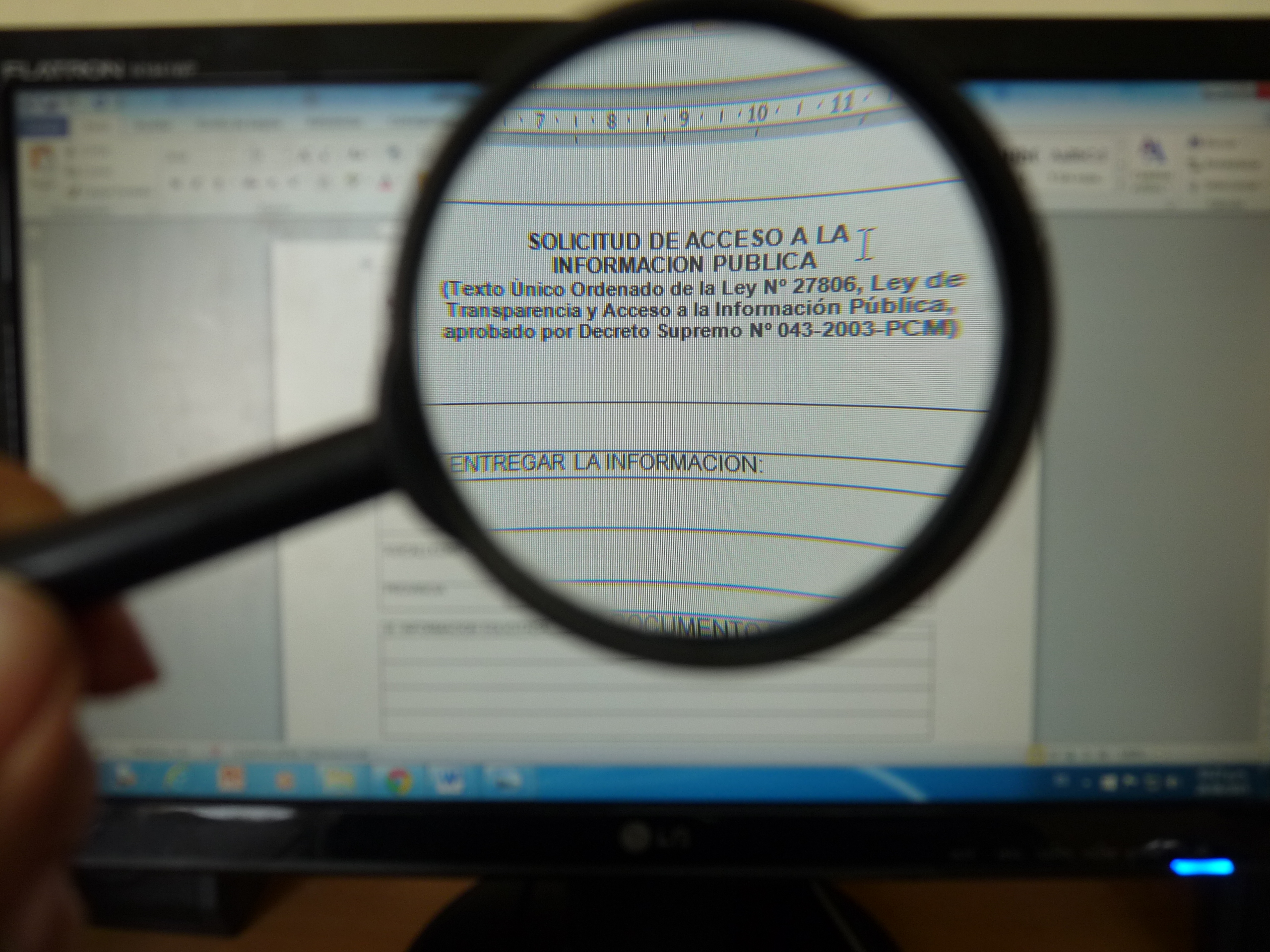- Peru has international funds to prevent and mitigate the effects of climate change. A way to know the destination and progress of these funds would be through transparency portals and mechanisms to spread the information to the population.
Lima, April 20th 2016.- The standard transparency portals (STP) of technical agencies, linked to climate change, do not place all the information required by Peru´s law on transparency and access to information, as we recorded in the second quarter of 2015. According to the study of Derecho, Ambiente y Recursos Naturales (DAR), these institutions achieved an average compliance of 73% in the quarterly update of their STP.
The lowest result was obtained by SERFOR with only 40% compliance, because it was only in 2015 that they implemented their STP. In addition, SERNANP’s and the IGP´s STPs presented minor and major difficulty of navigation, respectively, while looking for information (in the second quarter of 2015).
In the case of the ministries related to climate change, their average compliance was 92%, standing out MINEM, MINAM, MINAGRI and the MRE. While they kept their STP updated, this does not mean that the information needs of citizens were satisfied, since only it only represents the minimum obligatory information requiered by the Law of Transparency and Access to Public Information (Law N ° 27806).
The study, Diagnóstico 2015: Portales de transparencia y solicitudes de acceso a la información (minería, energía y cambio climático), applied indicators based on the existing legislation on transparency and access to public information and international regulation to 10 ministries and 8 technical agencies that are part of the National Commission on Climate Change.
This publication, promoted by DAR, showed that more than half of the technical agencies linked to climate change do not implement alternative mechanisms fitted for the diverse actors involved in this subject. For the first quarter of 2015, only 38% of these provided alternative attention to vulnerable populations, for example, indigenous peoples.
Why is climate transparency important?
On April 22, Peru, among other countries, will sign of the agreement on climate change that was adopted last December in Paris. The optimization of transparency and access to information mechanisms is essential to monitor and follow-up the fulfillment of the agreement, as well as of the international funds allocated to mitigation and adaptation to climate change.
Furthermore, the study checked the institutional web portals (IWP) of PROFONANPE and FONAM, members of the National Commission on Climate Change (D. S. N ° 006-2009-MINAM modified by D. S. N ° 015-2013-MINAM). The institutional portals of these organizations were compared with the indicators of the standard transparency portals (STP) of the State.
In the comparison of the institutional portals of PROFONANPE and FONAM, using indicators of STP, it has been verified that PROFONANPE would have 3% compliance and FONAM, 12%. This is having into consideration that private institutions are not legally obliged to publish information on their websites, or have a transparency portal. However, it is considered necessary that such organizations publish relevant information required by the STP, in order to foster transparency in the management of climate funds –important for the State.
For the third year and with the support of Open Society Foundations, DAR presents the results of the evaluation to public mining and energy organisms in terms of transparency and access to information. In this edition the monitoring work was extended to the institutions (sectorial and technical) linked to climate change.
Download the executive summary here.
ABOUT THE STUDY
AGENCIES PART OF THE NATIONAL COMMISSION ON CLIMATE CHANGE:
Ministries
- Ministry of Agriculture and Irrigation (MINAGRI)
- Ministry of Culture (MINCU)
- Ministry of Economy and Finance (MEF)
- Ministry of Energy and Mines (MINEM)
- Ministry of Production (PRODUCE)
- Ministry of Foreign Affairs (MRE)
- Ministry of Health (MINSA)
- Ministry of Transport and Communications (MTC)
- Ministry of the Environment (MINAM)
- Presidency of the Council of Ministers (PCM)
Technical agencies
- National Water Authority (ANA)
- Peruvian Institute of the Sea (IMARPE)
- Geophysical Institute of Peru (IGP)
- Supervision Agency for Investment in Energy and Mining (OSINERGMIN)
- National Program for Forest Conservation (PNCB)
- National Service of Natural Areas Protected by the State (SERNANP)
- National Service of Meteorology and Hydrology of Peru (SENAMHI)
- National Service of Forestry and Wildlife (SERFOR)
MECHANISMS FOR ACCESS TO INFORMATION:
It is understood as mechanisms for access to information:
- Monitoring system,
- Computer Security System,
- Identification of information most requested by users,
- Training for the staff,
- Alternative attention to vulnerable populations,
- User orientation, and
- Institutional politics on transparency and access to information.


